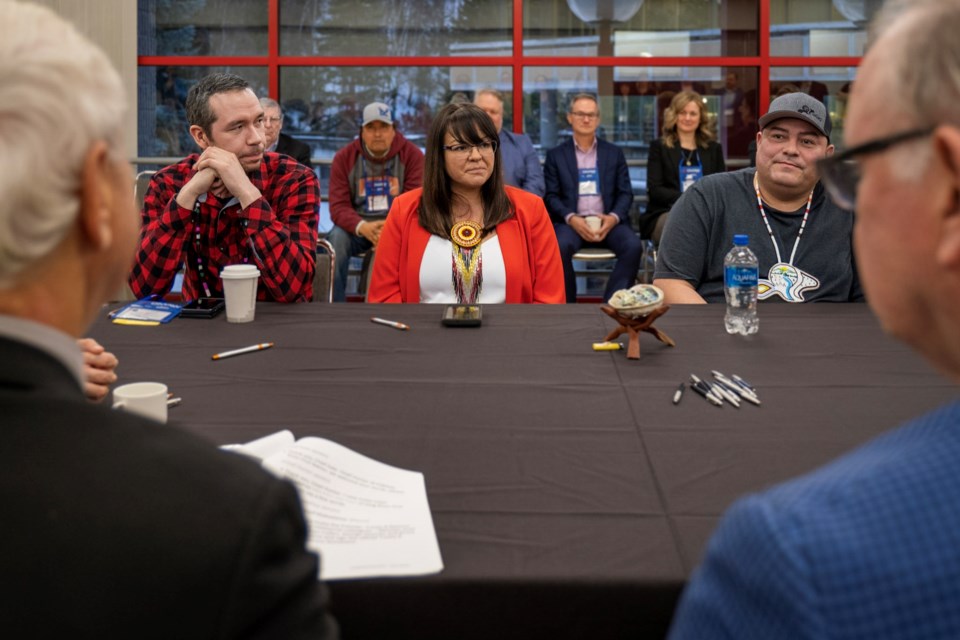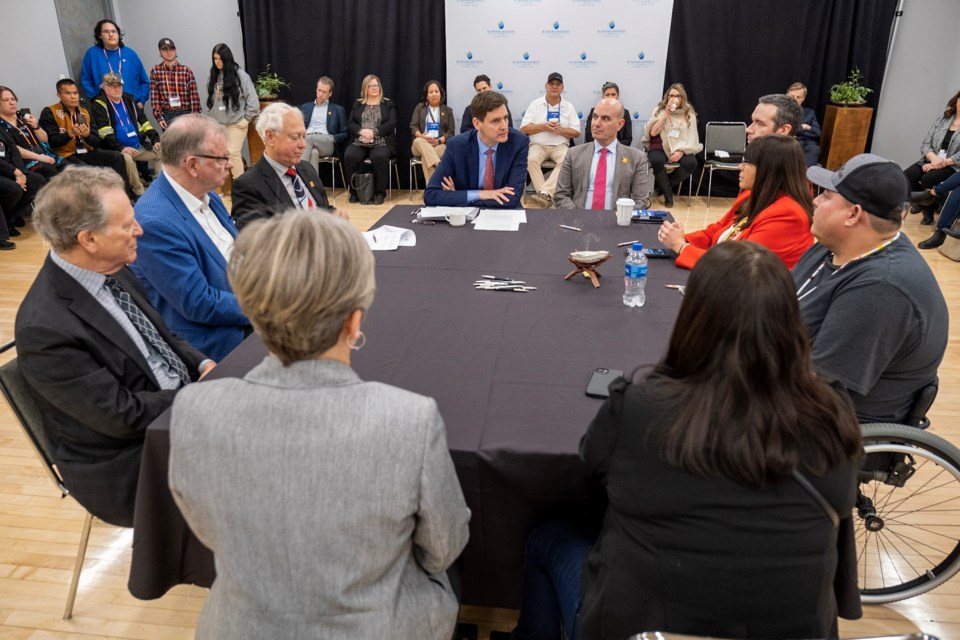The sa国际传媒 government has reached new agreements with four Treaty 8 First Nations to address the cumulative impacts and future planning of industrial development in the northeast.
The agreements provide hundreds of millions of dollars for land restoration and resource revenue sharing, and lays the groundwork to develop new land use and wildlife plans and establish more protected areas in the region.
“We’ve come together to recognize all that Treaty 8 was meant to be well over a century ago, a place where Treaty 8 members could hunt, trap, fish and exercise their treaty rights as they’ve done for millennia past,” said Nathan Cullen, provincial minister for water, land, and resource stewardship.
“We’re here to celebrate a consensus among us that ensures treaty rights are protected into the future, that resource development is carried out responsibly, and that we address the impacts of decades of industrial development to heal the relationship and to heal the land.”
The agreements were signed with the Doig River, Halfway River, Fort Nelson, and Saulteau First Nations. Work to finalize agreements with the West Moberly and Prophet River First Nations, as well as the McLeod Lake Indian Band is “progressing positively,”government officials said.
The nations came to the province collectively following the landmark Yahey decision from the sa国际传媒 Supreme Court in 2021. In that decision, the court ruled the province violated its treaty obligations by allowing extensive industrial development in the region without adequately considering the cumulative impacts to the land base and local First Nations.
Doig River Chief Trevor Makadahay called the agreements a stepping stone to a true partnership with sa国际传媒, and said he hopes the agreements set a trend for the rest of sa国际传媒.
“For us to have a real Canadian way, we all have to be part of how we do business, and how we have a hand in what our resource development and everything looks like,” Makadahay said. "We’ve always been advocating for a meaningful role in decision making, we’ve always wanted a seat at the table, for decades."
Makadahay added, "We always want to make sure that our treaty rights are protected, there’s always land protected, and we want to play a real role in resource development," he said, "and when I speak of resource development, I mean wildlife, oil and gas, even access to water.”
The four agreements announced Friday are part of a larger set of initiatives set out in a “consensus document” following negotiations with the First Nations.
Announced was a new Treaty 8 Restoration Fund, which combined with a $200-million announced earlier this week, will provide more than $600 million over 10 years to reclaim areas of industrial disturbance.
The province also anticipates the First Nations will share more than $200 million in royalty revenues from oil and gas development this year. Further negotiations will set out a new fiscal framework for revenue sharing in the future.
Saulteau Chief Justin Napoleon called the agreements a first step in addressing cumulative impacts and reconciliation with Treaty 8 nations, with lots of work to be done to implement.

“I look forward to it,” Napoleon said. “Implementation is going to have lots of blessings for us to learn from, and lots of growth and lots of new areas to find how we can work together in true partnership and friendship moving forward.”
The province has committed to protecting a further 250,000 hectares for land conservation to address the nations’ interests for caribou recovery, water quality, wildlife management, and cultural practices. It has also committed to developing plans to eliminate aerial herbicide use, supporting cultural land burning, and creating a regional wildlife working group with the nations and stakeholders to monitor animal populations, predators, and hunting regulations.
Fort Nelson Chief Sharleen Gale said her nation was never against resource development, only opposed to being left out. Ensuring equity and that First Nations are at the forefront of their economies is important, she said, noting more than $12 billion in royalties have left the nation’s traditional territory since 1973.
“We have the role where we’re stewards of our lands, and we ensure that anything that we do there’s a balance between the economic prosperity and environmental stewardship,” Gale said. “I really believe this new agreement represents a beginning, a chance to chart a new course.
"Restoration and control over our land use planning is important and our nation will be able to control our economic opportunities and how they’re developed on our lands," she said.
In a statement, Leonard Hiebert, chair of the Peace River Regional District, said he was pleased to see an outcome reached between the province and First Nations "through collaboration and mutual respect."
"The regional district is confident that this consensus agreement sets a positive path forward based on partner-centred leadership," he said.
by on Scribd



